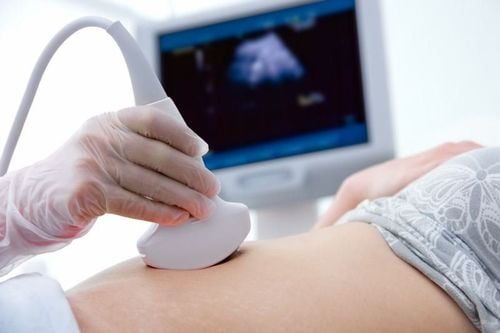This is an automatically translated article.
The article is expertly consulted by an Anesthesiologist, anesthesiologist, anesthesiologist - Department of General Surgery & Anesthesia - Vinmec Hai Phong International General Hospital.Epidural anesthesia method is currently the most effective method in reducing pain during labor, trusted and chosen by pregnant women. However, epidural anesthesia still carries certain risks, which can adversely affect the health of the mother.
1. General information about epidural anesthesia
Epidural anesthesia is an effective method, supporting women who are sensitive and cannot tolerate pain. This method of anesthesia is performed by the doctor inserting anesthetic into the space outside the spinal cord, also known as the epidural. It has an anesthetic effect from the L4-5 vertebrae and below, helping to reduce the mother's pain during labor. It should be noted that this method only helps to inhibit the pain, does not inhibit the mobility of the mother and the uterine contractions still appear normally.One of the advantages of using an epidural is that it reduces the risk of hypotension during labor compared to spinal anesthesia. In addition, epidural anesthesia also helps to optimize the anesthetic technique in cesarean section.
Epidural anesthesia can be applied in both caesarean section or vaginal delivery.
2. Complications of epidural anesthesia
Although epidural anesthesia offers great benefits during assisted reproduction, it still has the potential for unwanted complications, adversely affecting the health of the mother.2.1 Low blood pressure

Gây tê ngoài màng cứng có thể dẫn đến hạ huyết áp
2.2 Suppression of elevation In some cases, due to the use of large amounts of local anesthetic in the epidural, it can lead to loss of sensation in the chest, which governs the nerve organs that control the activities of the arm. , even inhibiting the nerve activity of the costal organs. If the condition worsens, the mother needs to be intubated to ventilate and regulate blood pressure.
2.3 Anesthesia Poisoning This is the result of an overdose of local anesthetic in the epidural space or because the catheter is inadvertently inserted into a blood vessel during injection, causing toxicity. Therefore, care should be taken to aspirate the catheter before injecting local anesthetic. In addition, if the mother shows symptoms of headache, tremor, convulsion during the injection, it is necessary to immediately stop the anesthetic injection and treat with ventilation, use anticonvulsant sedatives, treat according to the doctor's instructions. Anesthetic poisoning protocol, if it is confirmed that there is anesthetic toxicity, cardiac resuscitation can be performed if necessary.
2.4 Epidural puncture This is a rare complication, but it can still happen if the doctor administering anesthesia is inexperienced. This symptom is easy to recognize when you see blood at the tip of the needle. Perforation of the dura is likely to cause headaches, typically pain in the nape of the neck, front of the forehead, which is more painful when moving. For mild cases, basic measures can be applied such as taking pain relievers and rehydrating fluids. In severe cases, treatment with autologous blood transfusion may be considered.
2.5 Epidural Hematoma Epidural hematoma is also a rare complication, but an extremely dangerous complication. It occurs when the anesthetic is injected into the blood vessels in the epidural space causing bleeding, leading to rapid development of hematomas pressing on the spinal cord, if not treated in time can lead to the risk of paralysis. two lower limbs. It is necessary to closely monitor the clinical signs after epidural anesthesia to detect possible complications early for timely management.
2.6 Bacterial Infection Bacteria can enter the epidural space if the anesthetic procedure is not followed by aseptic procedure. The pregnant woman's body when infected with bacteria may show symptoms such as fever, increased white blood cells; If not treated in time can cause meningitis.
2.7 Epidural failure failure An epidural failure has many causes, but the most important is the skill of the doctor performing it. Failure of anesthesia causes some of the nervous system to not absorb the anesthetic, thereby effectively reducing pain for pregnant women.
3. Contraindications to epidural anesthesia

Chống chỉ định gây tê màng cứng khi đang sử dụng thuốc làm loãng máu
Pregnant women with low blood pressure Occurrence of bleeding, blood infection Inflammation of the pores, dermatitis leading to skin infection when performing the procedure. Currently having a needle puncture Have symptoms of an allergy to local anesthetics Use of blood thinners Epidural anesthesia is the most effective pain relief method currently being applied, however, to minimize dangerous complications, Pregnant women need to consider choosing a reliable and reputable medical facility to conduct this pain relief method.
The epidural technique has now been applied at Vinmec, helping pregnant women experience painless, gentle labor successfully. At Vinmec, there is a team of experienced and professional anesthesiologists who will help pregnant women experience the safest, painless delivery.
Please dial HOTLINE for more information or register for an appointment HERE. Download MyVinmec app to make appointments faster and to manage your bookings easily.













